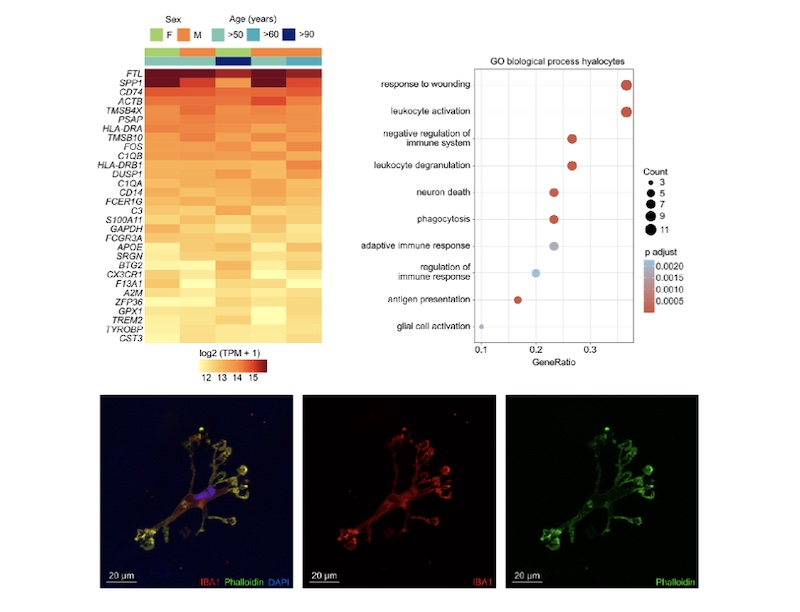
IOVS (2022)
Julian Wolf, Stefaniya Boneva, Dennis-Dominik Rosmus, Hansjürgen Agostini, Günther Schlunck, Peter Wieghofer, Anja Schlecht, Clemens Lange
Number of citations (crossref.org): Loading....

Purpose: Hyalocytes are the tissue-resident innate immune cell
population of the vitreous body with important functions in health and vitreoretinal
disease. The purpose of this study is to gain new insights into the biology and function
of human hyalocytes in comparison to other innate immune cells.
Methods: The present study applies fluorescence-activated cell sorting
and RNA sequencing to compare the transcriptional profiles of human hyalocytes,
retinal microglia (rMG) and classical, intermediate, and non-classical monocytes
isolated from the same patients. Immunohistochemistry was applied for morphological
characterization of human hyalocytes.
Results: Pairwise analysis indicates distinct differences between
hyalocytes and monocytes, whereas a high degree of similarity to rMG is apparent,
with comparable expression levels of established microglia markers, such as TREM2,
P2RY12, and TMEM119. Among the top expressed genes in hyalocytes, SPP1, CD74, and C3,
were significantly upregulated when compared with monocytes. Despite the high level of
similarity of hyalocytes and rMG, ten highly expressed genes in hyalocytes compared to
microglia were identified, among them FOS, DUSP1, and EGR2.
Conclusions: This study reveals a high degree of similarity between
hyalocytes and retinal microglia. Nevertheless, hyalocytes exhibit some expression
differences that may adapt them to the specific needs of the vitreous and provide
the basis for deciphering the multiple roles of this fascinating cell population
in health and vitreoretinal diseases.